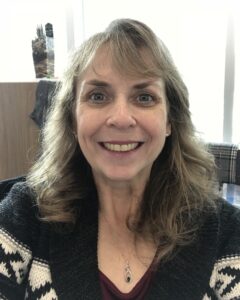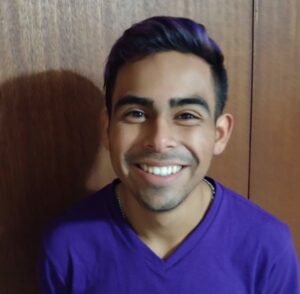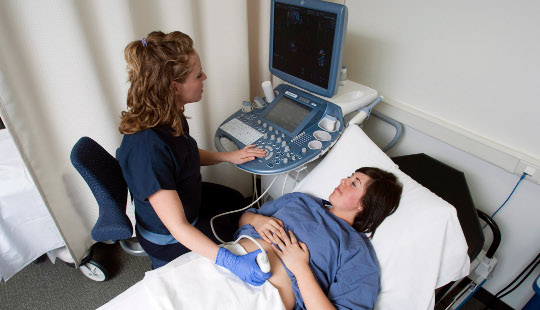By: Callen Lehman
With over 700 applicants every year and only 42 accepted, diagnostic medical sonography is a competitive program. It allows students to learn the proper functions toavoid injuries with specific scanning techniques. The program gives students an under- standing of the technical procedures and visualization through ultrasound.
Sonographers are an integral part of the ultrasound study, working closely with patients as it relies on user dependent scanning. This teaches students exactly whatimages to find and the best ways to optimize them. Once familiar with the images, theycan then know what they are looking for in patients to diagnose.
This is taught through practice scanning, giving a clear understanding of the anat-omy and knowing what a healthy body looks like in order to spot a flaw .
The competitive standards of the program includes an average of marks and a mul- tiple mini-interview format the applicants must complete to be reviewed and accepted.
As there are only 42 spots available, there is a competitive average that applicants must meet through upgrading courses or high school marks. Once evaluated, candidates are expected to send in their video interview or complete it at NAIT to be accepted and enrolled.

Chair of Diagnostic Medical Sonography – Lee Derksen
Sharing her knowledge to future Sonographers, Lee Derksen, chair of the DMS program has been in the healthcare industry for 35 years. Starting as an x-ray technologist wanting more patient contact, she re-trained in ultrasound and has now been involved with ultrasound for almost 30 years, working at NAIT for 10.
Derksen explains that not many people see ultrasound to its entirety, as there is a narrow perspective on it’s abilities. People may usually only hear about abdominal sonography and obstetrics (which focuses on the internal organs and fetal growth). The practice also explores breast, artery, heart, brain and joint imaging. While learning scanning techniques, students
are also taught and expected to be able to assist in the diagnosis of conditions found. Every graduate is placed in position for a career once completing their program as they will then be highly trained for the workplace. They may not end up start-ing specifically where they wanted, but it does not restrict graduates from starting at a community care clinic then moving up into a hospital environment if that is their goal.
“We’re trying to sustain the number of sonographers within the profession, so we’re constantly trying to provide enough graduates to meet the needs of patients and health care situations,” said Derksen.

Teneille Lesmeister
Teneille Lesmeister is in her second semester of medical diagnostic sonography. She has a strong passion
and interest towards science and its discoveries. She plans to explore the possibilities from the techniques and abilities that she is learning as the mobility in the industry varies.
“I’m able to go back to a small town if I choose to, or if I wanted to work in the city, I could. It’s a broad program when it comes to location,” said Lesmeister.
Teneille entered the program allowing herself to develop a stronger knowledge base and focus on a skill to serve others. It’s important to know your every move as a sonographer, since injuries can occur through repetitive motion during the ultra- sound process. A complete understanding of anatomy and science is a supporting factor for the competitive entry in this pro- gram. According to Teneille this also allows people to pursue their passions.

David Campos
David Campos, also in his second semester, wanted to involve himself in biology and take on this program since he was in grade nine. Wanting to work or involve himself in pediatrics, David is looking forward to pursuing his passion within his career with the help of this program.
He looks forward to completing this course as he will have the opportunity to meet new patients everyday within his workplace.
“I wanted something that would change everyday, so I could continue learning inside of it,” said Campos. Since technology is developing all the time, there are new scanning techniques that sonographers in practice are eventually required to learn. As graduates coming out of the program, the skill to continually learn new practices is mandatory within their careers but it’s one thing both of these students look forward to.
Photo Source: NAIT






